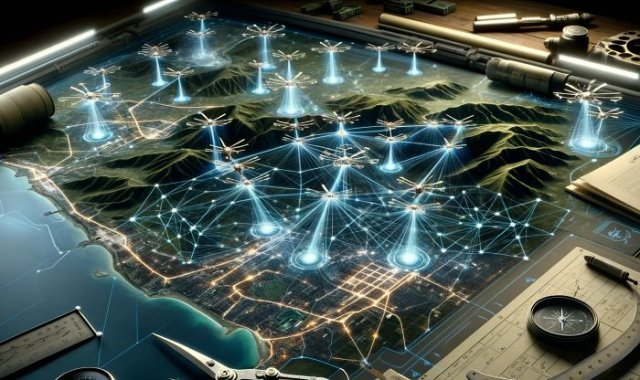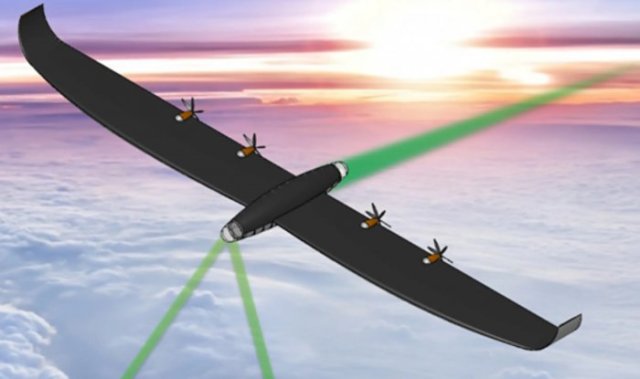
Wireless power grid
Raytheon has received a $10 million contract to build a prototype wireless distributed energy transmission system for DARPA in two years. It is being created within the framework of the Energy Web Dominance program, the purpose of which is to be able to transfer any amount of energy from an arbitrary number of sources to the desired point on the planet. The military, for whom this technology is being created, at the first stage simplified the task to obtain energy without having to pull communications and carry fuel for generators.
The concept of such a system is based on the creation of unmanned flying repeaters, from which military logisticians will be able to build networks of varying complexity and length. For this, it received the name "energy Internet". It is impossible to saturate many objects with energy at once, but it is possible to flexibly adapt networks to current tasks. Energy transfer will be carried out simply – through laser beams.

Repeater drone
The main advantage of such a system is the ability to avoid the risks associated with the delivery of energy resources through dangerous territories. It also becomes possible to provide power supply to a remote communication node for the duration of its operation, and then turn off the equipment and go to a new location, and the repeaters will fly after. Energy can be transferred to objects on the surface of the earth and water, as well as to other flying vehicles or directly to the receivers of various robots. There are much more disadvantages to the concept, the main one of which is the huge loss of energy. About 20% when converting electricity into a laser beam and another 50% when converting it back. But since this is a military development, costs and power losses fade into the background. Moreover, the energy source can be anything, like a nuclear power plant, or even an enemy stationary power grid. If the project is successful, they will try to adapt the technology to the needs of civil energy.
Alexander Martynenko

